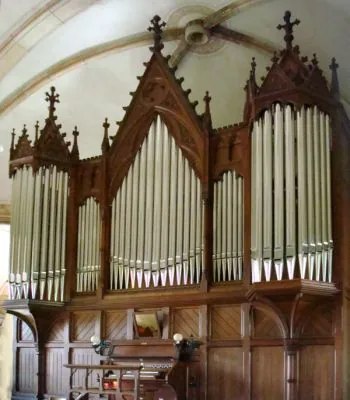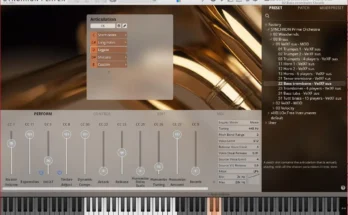The organ of the St. Boniface Church in Dietfurt/Germany was built by Ernst Röwer in 1903. Röwer was one of the leading organ builders in the eastern parts of Germany during the late Romantic period. More than 60 of his organs still exist in this area of the country.
Röwer’s organs are characterized by a large number of main registers of different tonal shades, blends without breaks and an economical use of reeds. For this organ, this means that about 2/3 of all registers are 16- and 8-foot registers, providing the organist with a huge palette of sounds. Both blends are straight, without breaks, and the organ uses only two reeds, a Hauptwerk pipe and a powerful Posaune pedal.
His organs are also known for their exceptional quality, using the best materials available and paying close attention to good craftsmanship, ensuring that his organs work flawlessly for a very long time. Röwer perfected the pneumatic unit, which provides a response without noticeable delay, making this pneumatic organ respond as directly as a good tracker. The action is also very quiet, and since most of the sensitive parts are protected inside the wind unit, it works virtually maintenance-free for decades.
The organ has survived all modernization trends, keeping its tonal characteristics almost unchanged. In 2006, it was restored to perfect working condition, and some pipes that were replaced with lower quality material during the wars of the last century could be replaced with new pipes made of the original material.
This organ is now an outstanding example of the late Romantic period and the solid craftsmanship of Ernst Röwer.

- Download Pipeloops – Ditfurt, Roever 1903 (HAUPTWERK)
- Original Publisher: Pipeloops
- Category: Sound Libraries
- Require: HAUPTWERK
- License type: Full
- Download Size: 9.33 GB




